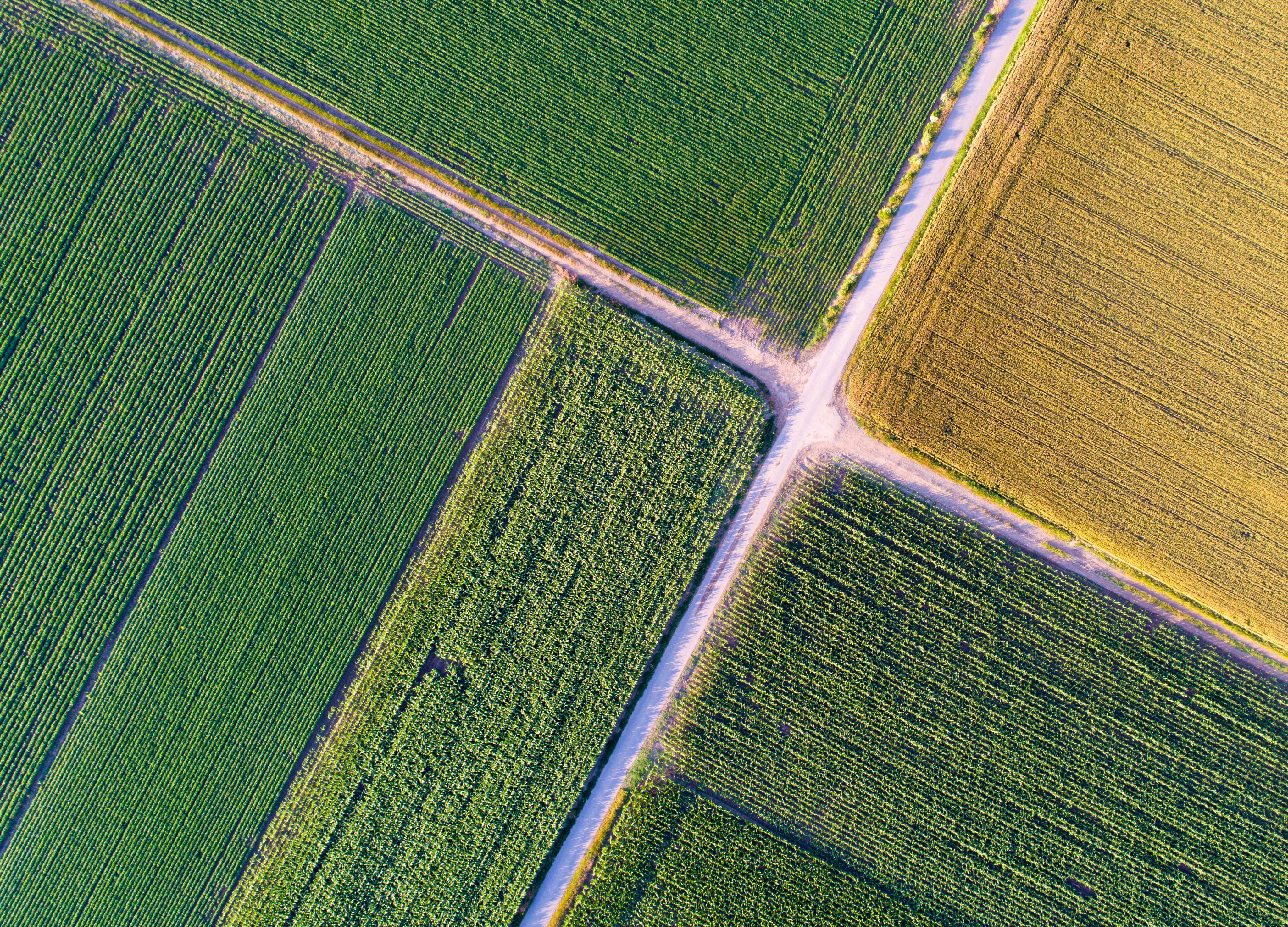Listening for danger
How new technology is protecting crops at risk of parasitic nematodes.

Plant-parasitic nematodes are tiny – so tiny in fact, that they’re measured in mere millimeters. Despite their size, these transparent roundworms are huge in number and can have a devastating effect on crops.
Munching through the roots of crops such as corn, potatoes, soybeans and cereals, they open the door for fungal infections to take hold.
Juvenile nematodes shown in tomato root tips after infestation.
Juvenile nematodes shown in tomato root tips after infestation.
By the time farmers notice they have a problem, it’s already too late. The nematodes have already drilled into the plants to attack them, spoiling the crop and reducing yield.
These 'invisible threats' can have a devastating effect: plant nematode infections can cause up to 60 percent yield loss in a crop, or an estimated global loss of $157 billion a year.
Root systems of tomato plants 30 days after infestation with egg suspensions of M. incognita. The untreated check (A) demonstrated severe root galling (Zeck index ‘8’), whereas plants treated with cyclobutrifluram (B) provided full protection against RKN infection (Zeck index ‘0’).
Root systems of tomato plants 30 days after infestation with egg suspensions of M. incognita. The untreated check (A) demonstrated severe root galling (Zeck index ‘8’), whereas plants treated with cyclobutrifluram (B) provided full protection against RKN infection (Zeck index ‘0’).
And because they are difficult for farmers to spot and to control, they are present in almost all agricultural soils.
Mitigating the impact of these damaging parasites requires a multi-pronged approach including preventative and targeted solutions, such as Syngenta’s registered trademark active ingredient TYMIRIUM® technology. Offering protection against plant-parasitic nematodes and soil-borne pathogens, it can be applied in minuscule amounts in fields, or directly on seeds, to help young seedlings thrive in the first few weeks of life.
However, the effects of mitigation are not immediately apparent: whether using a specific amount of a certain product at a particular time has saved a season’s crop is often not evident until after the fact.
Detect and protect
So, a novel approach that allows scientists to 'listen' to plants suffering from a nematode attack, in real time, means we can detect the problem and respond to this hidden danger with an effective nematicide.
It’s a breakthrough that’s come out of a research collaboration between Syngenta Crop Protection and Vivent Biosignals, a Swiss-based technology enterprise.
A team of scientists, led by Syngenta Fellow Dr Anke Buchholz and Dr Andrzej Kurenda of Vivent Biosignals, used specialized technology to measure what happens when nematodes attack the roots of a crop – and what happened when they were protected against this attack by the application of nematicides.
And for the first time, they could monitor how a crop suffered in real time, measuring the so-called stress levels of the plant via readings from Vivent’s Biosignals’ technology.
Buchholz says the immediacy of the listening technology enabled the team to monitor the effectiveness of the nematicide in fighting off a nematode attack. This was not just the case when the treatment was used to prevent nematodes attacking, but also when it cured an attack.
"This was a unique chance to see when the product was effective in real-time,” she says. “Not just the outcome, but to really monitor how it's working. That was the fascinating part.”
The technology harnesses plant electrophysiology, which means recording the electrical signals that plant cells send out in response to changes in their environment, which Buchholz says is "one of the fastest, if not the fastest mechanism" that plants use to communicate between cells, tissues and organs.
And conversely, they observed a protection against nematode induced stress in the crops that were treated with effective nematicides – as the products were buffering crops from nematode infection.
“The plant is communicating with ion fluxes, and we are listening, in principle, from the outside," Buchholz says.
“Using extracellular plant electrophysiology, we can hear what is going on in the plant.”
Biosensor equipment setup in greenhouse. Credit: Vivent Biosignals
Biosensor equipment setup in greenhouse. Credit: Vivent Biosignals
Detect and protect
So, a novel approach that allows scientists to 'listen' to plants suffering from a nematode attack, in real time, means we can detect the problem and respond to this hidden danger with an effective nematicide.
It’s a breakthrough that’s come out of a research collaboration between Syngenta Crop Protection and Vivent Biosignals, a Swiss-based technology enterprise.
A team of scientists, led by Syngenta Fellow Dr Anke Buchholz and Dr Andrzej Kurenda of Vivent Biosignals, used specialized technology to measure what happens when nematodes attack the roots of a crop – and what happened when they were protected against this attack by the application of nematicides.
And for the first time, they could monitor how a crop suffered in real time, measuring the so-called stress levels of the plant via readings from Vivent’s Biosignals’ technology.
Buchholz says the immediacy of the listening technology enabled the team to monitor the effectiveness of the nematicide in fighting off a nematode attack. This was not just the case when the treatment was used to prevent nematodes attacking, but also when it cured an attack.
"This was a unique chance to see when the product was effective in real-time,” she says. “Not just the outcome, but to really monitor how it's working. That was the fascinating part.”
The technology harnesses plant electrophysiology, which means recording the electrical signals that plant cells send out in response to changes in their environment, which Buchholz says is "one of the fastest, if not the fastest mechanism" that plants use to communicate between cells, tissues and organs.
And conversely, they observed a protection against nematode induced stress in the crops that were treated with effective nematicides – as the products were buffering crops from nematode infection.
“The plant is communicating with ion fluxes, and we are listening, in principle, from the outside," Buchholz says.
“Using extracellular plant electrophysiology, we can hear what is going on in the plant.”

“Using extracellular plant electrophysiology, we are listening to what is going on in the plant.”
Dr Anke Buchholz, Syngenta Fellow

Although the use of plant electrophysiology dates back 120 years, such is the complexity and sheer weight of the data involved that, only now, thanks to machine learning, we can start to understand these signals.
“No human could handle and decode these signals, see the difference, and translate it,” Buchholz says of Vivent Biosignals’ technology.
As a result of this project, the joint Syngenta and Vivent Biosignals team developed a model using machine learning to process the data that the plants were sharing with us.
And in future, it could help scientists to detect new solutions that shield crops against parasites, pests and diseases.
“That's what we really felt was unique about this technology,” she says.
The findings, which were recently published in the Journal of Pest Science offer a new method of monitoring the success of our treatments against nematodes.
Bringing light into the dark - plant electrophysiological monitoring of root knot nematode infestation and real-time nematicide efficacy.
Bringing light into the dark - plant electrophysiological monitoring of root knot nematode infestation and real-time nematicide efficacy.
Chief Executive of Vivent Biosignals, Carrol Plummer, says the research highlighted the benefits of using the company’s technology in developing innovative solutions for sustainable agriculture.
“Being able to detect plant stress from invisible pests, like harmful nematodes, as well as the beneficial responses to nematicides, will enable farmers to apply crop treatments in a more timely manner,” she said.
Patrik Hoegger, Head Insect Control Research Biology at Syngenta, says the research confirms the effectiveness of the TYMIRIUM® technology, which was specifically designed to provide long-lasting protection against these invisible, yet highly destructive nematodes.
“We knew the technology would be a breakthrough, but to be able to see the effectiveness of our product in real time underscores the huge impact it has in supporting farmers to grow healthy, reliable crops.”
Learn more about TYMIRIUM® technology here.
TYMIRIUM® Technology | Syngenta
Nature doesn’t operate in isolation. And neither should we.
That’s why we’ve created Shoots by Syngenta™, a platform for collaboration, designed to advance sustainable agriculture by bringing together ideas, technologies and research. Built on openness and transparency, it’s driven by a belief that scientific investigation and innovation will go further and faster, by connecting discoveries from across the innovation ecosystem.
Help us accelerate innovation through collaboration.
Shoots by Syngenta™ is an invitation to the world’s brightest minds – a call for people to come together and tackle some of the world’s most complex agricultural challenges: for nature, farmers and food security. Submit your idea.





